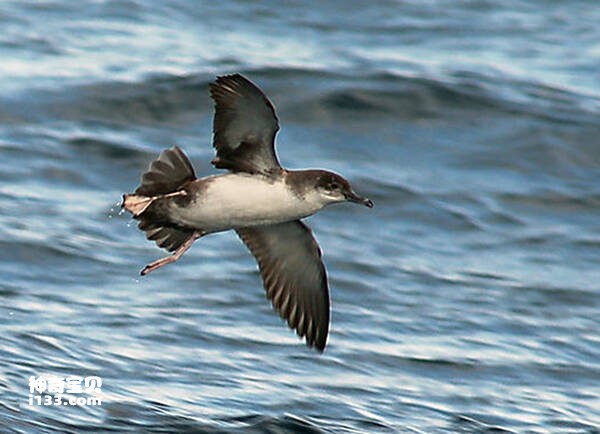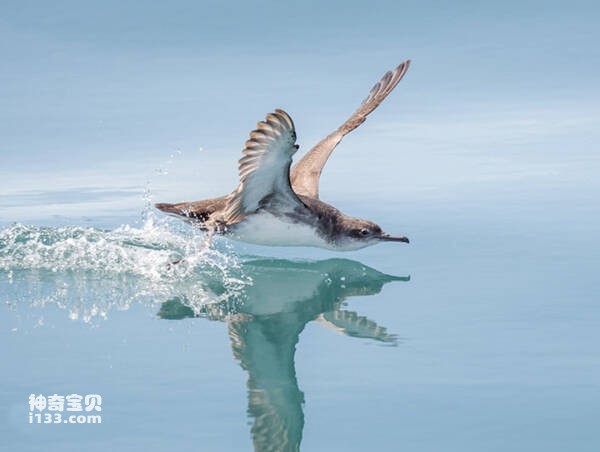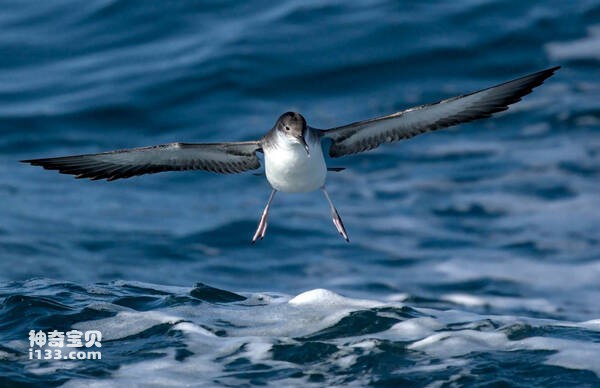Puffinus yelkouan
IUCN
LCBasic Information
Scientific classification
- name:Puffinus yelkouan
- Scientific Name:Puffinus yelkouan,Yelkouan Shearwater,Pardela mediterránea
- Outline:Waterfowl
- Family:Procellariiformes Procellariidae Puffinus
Vital signs
- length:About 40 cm
- Weight:330-480g
- lifetime:No verification information
Feature
Dark grey upper body feathers, white underparts, some with darker patterns in armpits and under tail
Distribution and Habitat
Resident: Algeria, Bosnia, Bulgaria, Croatia, Egypt, France, Georgia, Greece, Israel, Italy, Lebanon, Libya, Malta, Morocco, Palestine, Spain, Tunisia and Turkey.
Breeding: Albania
Non-breeding: Romania, Syria and Ukraine.
Migrant: Cyprus and Slovenia.
Wandering (uncertain seasonality): United Kingdom.
Wandering: Austria, Gibraltar, North Macedonia and Russian Federation.
Origin uncertain (uncertain seasonality): Monaco and Montenegro.
The Mediterranean Shearwater lives on islands or rocky islets on steep cliffs. The species is endemic to the Mediterranean, where it also winters. They are found on the French islands of Hyères, Marseille and Corsica. Other breeding grounds are Sardinia, Malta, Tunisia, Greece, Italy, Turkish Islands. Nests are built in caves or rock crevices (caves, rubble at the foot of cliffs) or dug caves. In most cases, the cave consists of a corridor that ends with a more or less brooding chamber.
Appearance
The Mediterranean Shearwater is 40 cm long, has a wingspan of 76-93 cm, and weighs 330-480 g. The species is smaller than the similar species, the Corian Shearwater, and is very close to the Balearic Shearwater, but with a slightly higher contrast. The upper body feathers are dark gray, and the lower body is white. Some have dark patterns in the armpits and under the tail. The bill is black, with a slightly curved tip. In this family, the tubular nostrils are very well developed. The sexes are similar, but can be easily distinguished when singing.
There are tubular nostrils at the base of the bill. The wings are usually long and narrow, with a streamlined design that allows long journeys on the open sea, using the wind and air flow generated by the waves to minimize physical effort and energy consumption. The bird looks like a flying cross, with its wings at right angles to the body, and when it flies low over the sea, it changes from dark brown to white, as the dark upper body and
Details
Mediterranean Shearwater (Scientific name: Puffinus yelkouan) Foreign name Yelkouan Shearwater, Pardela mediterránea, no subspecies. The Mediterranean Shearwater was previously considered a subspecies of the Atlantic Shearwater. After the first differentiation, it has been classified as the "Mediterranean Shearwater" subspecies of the Atlantic Shearwater, also known as the nominative subspecies; but it has been considered a single species because the Balearic form of "mauretanicus" has also been differentiated into the Balearic Shearwater. Italian biologist Giuseppe Acerbi formally described the Mediterranean Shearwater in 1827 based on specimens collected in the Bosphorus Strait in Turkey. He classified the species into the genus Procellaria and created the binomial name "Procellaria yelkouan". In 1760, French zoologist Mathurin Jacques Brisson classified the Mediterranean shearwater in the genus Puffinus. The genus name Puffinus is a neo-Latin word based on the English word "puffin". The specific name "yelkouan" is Turkish for "wind chaser", meaning seagull. The Mediterranean shearwater is considered monotypic, with no identifiable subspecies.

Mediterranean shearwaters are pelagic seabirds that wait for nightfall to return to their roosts. Therefore, they spend most of the year on the high seas and arrive at the islands in November to explore the breeding grounds. Mating only takes place in late February. They build nests in the breeding grounds. Collectively fish and form raft-like gatherings in the offshore waters. Their mass passage at sunset is known as the River of Seagulls on the Hyères islands.
The Mediterranean Shearwater flies over the water. If the sea is calm, they alternate between gliding with a few flaps of their wings. In this case, their flight is straight. In windy days with good sea conditions, they use the air currents created by the movement of the sea surface to move without flapping their wings. The flight of this species is powerful, effortless and often spectacular. The Mediterranean Shearwater has the typical "shearing" flight of the genus, leaning from side to side with its rigid wings, with almost no flapping of the wings, and the wingtips almost touching the water. The flight of this species is similar to that of the albatross.

The Mediterranean shearwater feeds mainly on fish, cephalopods, shrimps and fishing discards. It can dive to a depth of 40 meters to catch prey. The Mediterranean shearwater uses its fin-like wings and webbed feet to swim in the water. They excrete excess salt intake through their nostrils along with seawater and prey; salt glands located in the brain allow them to filter salt water. The male bird's song is different from that of the female: in fact, the song consists of two parts. The second part of the male's song is shorter and sharper.
The Mediterranean shearwater does not build a nest, but lays eggs in a hollow. During the entire 55-day incubation period, the male and female take turns incubating the eggs. Individuals looking for a nesting site or a mate arrive on the breeding islands starting in November; already formed pairs of Mediterranean shearwaters that seek the same cave and the same partner each year may arrive a little later. The female shearwater lays one egg per year. The species is not capable of making a replacement egg in case of failure. The breeding season lasts 1 and a half months, from mid-March to early May. The hatching and feeding period of the chicks is from mid-May to the end of July. The parents take turns feeding the young about every 3-4 days. They fly hundreds of kilometers every day to hunt for food. Then the adult birds return to the sea. The 4-month-old young will have to leave the cave and learn to fly to reach the open sea. At an average of 4 years old, they will return to their birthplace to find a mate and reproduce there in turn.

Based on population assessments covering the entire range of the species, figures indicate a total of 15,337-30,519 pairs, roughly equivalent to 46,000-92,000 individuals (Derhé 2012). However, this number is inconsistent with the preliminary counts conducted in early February, which were averages. 75,000-90,000 birds were recorded migrating across the Bosphorus (2015), by which time most breeding birds were already near their breeding grounds in Malta, France and Italy. More surveys are urgently needed to confirm the size of the breeding population, especially in the Aegean and Turkey.
Listed in the IUCN Red List of Threatened Species 2018 ver3.1 - Vulnerable (VU).
Protect wildlife and eliminate bushmeat.
Maintaining ecological balance is everyone's responsibility!








